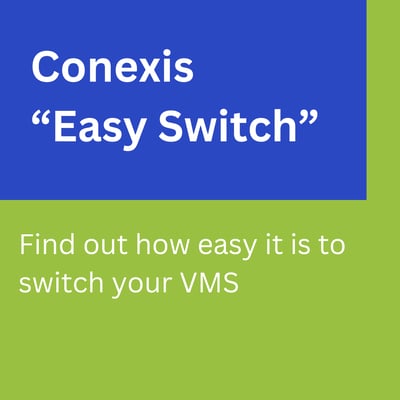Just like businesses perform annual health check-ups on their finances, compliance, and operations, your Vendor Management System (VMS) deserves the same attention. As we head toward 2026, it’s time to ensure your VMS is future-ready - or consider switching to a modern solution.
Organizations that rely on outdated or fragmented VMS solutions risk falling behind - whether through hidden costs, inefficiencies, or missed opportunities for innovation. So, the big question is: Is your current VMS provider truly preparing you for the workforce challenges of 2026? Or is it time to re-evaluate and switch to a more modern, user-friendly solution?
Why 2026 is the Right Time for a VMS “Annual Check-Up”
Technology, workforce trends, and compliance regulations are moving faster than ever. A VMS that worked a few years ago may now be slowing your organization down. By re-evaluating your system heading into 2026, you can:
-
Uncover inefficiencies hidden in outdated workflows or slow legacy architecture.
-
Benchmark performance against what modern VMS platforms now deliver.
-
Ensure scalability as workforce complexity increases in healthcare, logistics, manufacturing, and other high-volume industries.
-
Future-proof your investment by aligning with providers who innovate, not just maintain.
Just like any critical system in your business, your VMS needs a yearly review to ensure it’s optimized for your evolving workforce strategy.
Why Traditional VMS Technology Falls Short
Legacy Vendor Management systems often create more problems than they solve:
-
Slow and over-engineered platforms frustrate users.
-
Expensive and lengthy implementations drain resources.
-
Employees work around the system, reducing visibility and compliance.
These inefficiencies are reintroducing the same workforce challenges that VMS technology was originally designed to solve.
The Case for a Modern VMS in 2026
Modern VMS platforms, like Conexis, are built to eliminate these pain points. With:
-
Intuitive dashboards tailored to your workflows.
-
Open APIs for seamless integrations and real-time data access.
-
Configurable features to support any skill category - from healthcare to logistics.
-
Fast, scalable architectures designed for today and tomorrow.
The result? Better compliance, lower costs, and more informed workforce decisions—without the complexity of legacy systems.
How to Re-Evaluate Your Current VMS in 5 Steps
Re-evaluating your current VMS Provider is similar to building a business case for a new VMS. You are essentially identifying your current pain points and challenges, identifying the benefits of changing your VMS provider, and identifying the right VMS provider for your organization. Here are some key points that may help you in your evaluation.
1 - Assess the Current State
Identify hidden costs, wasted time, and workforce visibility gaps.
- The first step is to start with an assessment of your current VMS, processes and related costs.
- You need to find out where your organizations pain points are and uncover all of the costs (including the hidden ones) both real dollars as well as dollars related to wasted time associated with your current processes.
2 - Understand What’s New
Compare your current system against modern innovations like open integrations, real-time analytics, and advanced security.
- Many organizations may not know what new features are now available with more modern VMSs. Modern VMSs are not built on outdated architecture - but rather on the latest codebase, interface design, architecture, and security.
- Modern VMSs have Open APIs that make integrations a breeze and provide you direct access to your data on your terms. If you have a Legacy VMS provider, you may not know that better systems are out there.
- In addition, modern VMS providers can address all skill categories, such as healthcare, manufacturing, light industrial, logistics, warehouse, and other high-volume, fluid workforces without clunky add-ons. These are just a few of the innovations that you should be looking out for.
3 - Define the Benefits of Change
Quantify savings, efficiencies, and risk reduction over the next 5 years.
- It's important to clearly define the benefits that your organization will realize once a change is made. With a vendor management system, you can present a huge number of benefits to your organization’s decision-makers.
- Understanding the future state will help you estimate these hard and soft dollar savings. The result is a financial statement of benefits that the organization should expect to realize over 5 years.
- A modern VMS will make it easier to improve visibility into your contingent workforce and dramatically improve how you manage your vendors. The result will be an automated process that leads to greater cost savings, saved time, improved hiring decisions, the consolidation of vendors, more insightful analytics and much more.
4 - Engage Stakeholders
Align HR, procurement, IT, and finance around the benefits of a modern solution.
- You now understand why your current external workforce management strategy is costing your business money, and you know how the implementation of a vendor management system will lead to cost savings, improved efficiencies and better vendor decisions. One thing you don’t yet have, however, is the buy-in of your stakeholders.
- Whether you just report to a CEO or you have multiple teams that are part of the decision-making process (such as procurement hiring managers, HR, IT and finance), it’s important that you receive buy-in from every stakeholder involved in non-employee management.
- These stakeholders are far more likely to support VMS implementation when they know how it will benefit and improve their current processes.
5 - Find the Right Partner
Choose a provider who offers both simplicity and expert support - so your team can focus on results, not implementations.
- After securing your organization's support, the next step is to find a VMS provider to collaborate with. It's crucial to ensure the provider aligns well with your business needs and the goals you aim to achieve through your VMS implementation.
- Consider whether you prefer a provider that offers comprehensive support throughout the process or one that provides a straightforward solution enabling you to operate independently. Your VMS provider will be a key strategic partner, so ensure they possess the necessary expertise and knowledge for both implementation and ongoing support.
Why Consider Conexis VMS
With Conexis, you get the power of enterprise VMS software without the complexity or cost.
- Fast VMS Deployment: Get up and running in weeks, not months
- Transparent Pricing: Flexible pricing with no hidden costs
- White-Label VMS Ready: Customize with your own brand
- Real-Time Insights: Analytics that improve decision-making
- Audit-Ready Compliance: Store contracts, worker data, and rates in one secure hub
We Make Switching your VMS Easy and Fast
At Conexis, we know how daunting switching can feel. That’s why we created Conexis Easy Switch - our proven five-step program that ensures you’re fully operational in just a few weeks:
- Document business requirements
- Assign a dedicated change management team
- Lead all data migration and customization
- Provide and manage training and support
- Deliver ongoing white-glove customer care
Switching doesn’t need to be disruptive. With Conexis Easy Switch, you get a seamless transition - so you’re ready for 2026 and beyond.
 Conexis Easy Switch Program
Conexis Easy Switch Program
Conexis makes switching your VMS easy with our Easy Switch Program.
Our specialized Easy Switch Team will take care of every detail for you, ensuring a seamless transition. Our team meticulously plans and executes each step, from initial assessment to final implementation, and handles all the complexities, so you can focus on your core business activities without any interruptions.
Plus, you can be up and running - fully operational - in just a few weeks.
Next Steps: Get Ready for 2026
Don’t let outdated technology hold you back another year.
-
Download our Free Ultimate VMS Buyer’s Guide for an overview of what to look for in a modern VMS and also a checklist of questions when evaluating VMS providers.

-
Schedule a Free Consultation with our experts - we’ll help you assess your current state and explore the benefits of a modern VMS.
2026 is the year to give your VMS its annual check-up. If your provider isn’t keeping you ahead, it may be time to switch. Conexis makes it easy.
Discover the Power of Conexis VMS
Conexis is an award-winning Vendor Management System built for mid-market organizations that want the power of enterprise software without the complexity or cost.
Leveraging the latest technology, Conexis delivers the expertise, reliability, and security of enterprise systems, while offering the flexibility, user friendliness and tailored, personal service you require. Learn more about our Company and why organizations Choose Conexis VMS.
Contact Us
If you are looking to change your VMS solution, we are here to help. Contact Us for a Free No-Obligation Consultation to discuss your workforce challenges (and get immediate actionable insights). See how easy Conexis is to use by taking a quick 2 minute Self-Guided Tour, or Book a Personal Demo Today!
Additional Articles on this Topic:
- Should I change my VMS? 5 Questions to ask yourself
- Can I change my VMS without changing my MSP?
- What to look for in a VMS - The Ultimate VMS Buyer's Guide
- Conexis Easy Switch - we make switching easy for you
- Is it time to switch VMS Providers? Ask Yourself these 5 Questions





